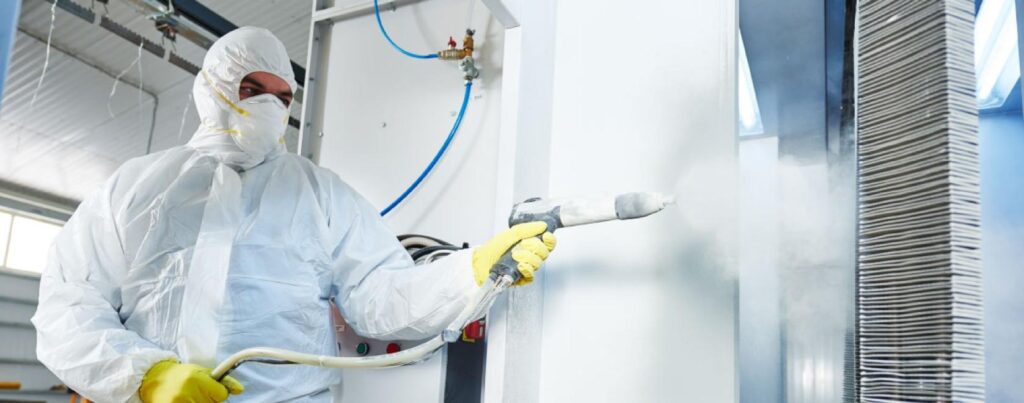Table of Contents
- Safety Alert Issued for Immediate Evacuation Following Spraying Operations
- Health Risks Associated with Exposure During and After Spraying Activities
- Best Practices for Ensuring Worker and Resident Safety in Affected Areas
- Guidelines for Emergency Response and Decontamination Procedures
- Insights and Conclusions
Safety Alert Issued for Immediate Evacuation Following Spraying Operations
Residents and workers within the designated spraying zones must vacate the premises immediately. This precaution is crucial to avoid exposure to potentially hazardous chemicals currently being applied. Emergency services have emphasized that remaining within the affected area can pose serious health risks, including respiratory complications and skin irritation. Authorities are coordinating with local health agencies to monitor air quality and ensure public safety throughout the operation.
To assist with the evacuation process, individuals are advised to follow these guidelines:
- Close all windows and doors to prevent chemical infiltration before departing.
- Avoid using outdoor ventilation systems to limit indoor contamination.
- Wear protective masks if evacuation is delayed.
- Follow official routes and instructions provided by emergency personnel.
Timely compliance with these measures is essential to minimize exposure and safeguard the community. Stay tuned to official channels for ongoing updates and instructions.
Health Risks Associated with Exposure During and After Spraying Activities
Exposure to chemicals during and after spraying operations poses significant health hazards that must not be underestimated. Inhalation of toxic substances can lead to immediate respiratory distress, eye irritation, and skin burns, while prolonged contact may contribute to chronic conditions such as asthma, neurological disorders, and even cancer. Vulnerable groups, including children, pregnant women, and individuals with pre-existing health issues, are particularly at risk. Protective measures are imperative to minimize direct exposure, as these substances can linger in the environment long after the spraying has stopped, contaminating air, surfaces, and water sources.
Health complications arising from contact with sprayed chemicals often manifest through a variety of symptoms and may escalate rapidly if safety guidelines are ignored. Common effects include:
- Respiratory issues: coughing, wheezing, shortness of breath
- Skin reactions: rashes, blistering, and chemical burns
- Neurological symptoms: headaches, dizziness, nausea
- Eye discomfort: redness, burning sensations, and temporary vision impairment
Immediate evacuation and avoiding re-entry until the area is declared safe by authorities are critical steps to safeguard health. Employers and workers must adhere strictly to safety protocols, including using proper personal protective equipment (PPE) and ensuring adequate ventilation post-application to prevent hazardous buildup of chemical residues.
Best Practices for Ensuring Worker and Resident Safety in Affected Areas
To maintain the highest standards of safety following spraying operations, it is essential that both workers and residents strictly adhere to established protocols. Immediately vacating the treated area prevents unnecessary exposure to chemicals, which can pose significant health risks. Employers must ensure that all personnel are thoroughly briefed on evacuation routes and timing before operations commence. Additionally, visible signage should be installed around the perimeter to clearly communicate restricted zones and the duration for which re-entry is prohibited.
Key safety measures include:
- Providing appropriate personal protective equipment (PPE) for all workers involved in the spraying process.
- Implementing continuous air quality monitoring to detect the presence of residual chemicals.
- Ensuring rapid communication channels are established to inform residents immediately once it is safe to return.
- Conducting post-operation inspections to verify that no hazardous residues remain.
- Offering detailed safety instructions and contact information for emergencies.
Guidelines for Emergency Response and Decontamination Procedures
Immediate action is critical when exposure to sprayed chemicals occurs. Evacuate the affected zone without delay to avoid inhalation or skin contact. Once in a safe location, inform onsite safety personnel and seek medical attention if symptoms such as dizziness, nausea, or skin irritation arise. Do not attempt to re-enter the treated area until clearance has been officially given by safety authorities.
Decontamination steps must be followed meticulously to reduce health risks. Remove contaminated clothing promptly and secure it in a sealed bag for proper disposal or cleaning. Rinse affected skin areas with copious amounts of water for at least 15 minutes, avoiding harsh scrubbing. Additionally, the following practices are imperative for effective decontamination:
- Use soap and water to wash thoroughly after initial rinsing
- Avoid using solvents or abrasive cleaners on skin
- Ensure that eyewash stations are utilized immediately if eye exposure occurs
- Dispose of contaminated materials according to hazardous waste protocols
Insights and Conclusions
In conclusion, adherence to safety protocols during spraying operations is paramount to protecting the health and well-being of all individuals in the vicinity. Authorities and operators urge the public to vacate treated areas immediately after spraying to minimize exposure to potentially harmful chemicals. Staying informed and following official guidelines ensures a safer environment for everyone. Continued vigilance and cooperation remain essential as efforts to maintain public safety proceed.Check Our Other Blogs
- StunGun – Your Trusted Source for Stun Guns, Laws, and Self-Defense Tips
- PepperSprayLaws – Your Trusted Resource for Pepper Spray Information
- StunGunLaws – Your Trusted Guide to Stun Gun Legality and Safety




